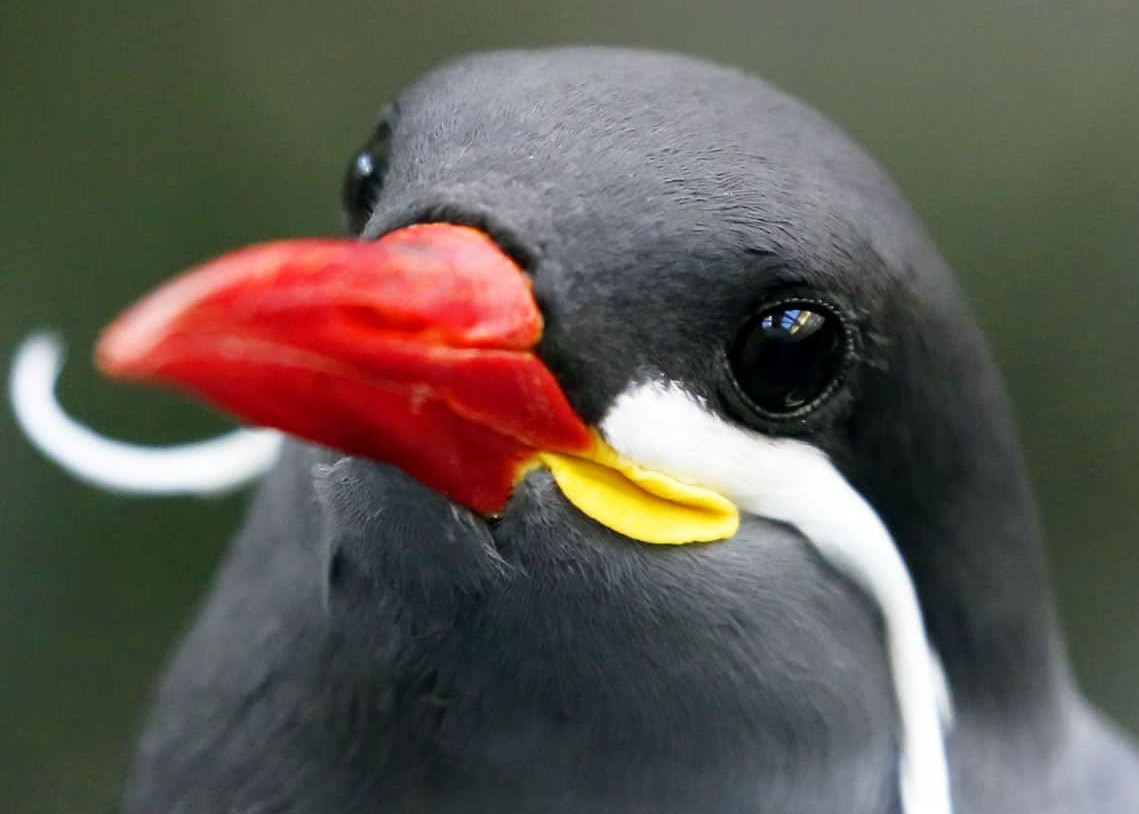Black-Spotted Desert Gorilla
Black-spotted desert gorillas are one of three gorilla species on Norrab. These gorillas inhabit the Looming Desert where they dominate the ecosystem. While they like to avoid contact with people, they have been known to attack and easily kill the occasional traveller.
Anatomy

Black-spotted desert gorillas are the largest gorilla, and primate, species on Norrab. They reach shoulder heights of roughly two and a half metres, when stood on their hind legs. They are significantly top-heavy, with broad shoulders, powerful arms, and short, stubby legs.
They are easily distinguishable from other gorilla species thanks to their light grey colouration. Black spots dot the face, neck, and back, giving the species their name.
Black-spotted desert gorillas have large heads with powerful jaws. Their canine teeth can reach lengths of up to six centimetres; the longest teeth of any land mammal on Norrab.
This species exhibits sexual dimorphism, with males almost twice the size as females. Female gorillas, on average, have larger heads than males, with larger brains. Studies have shown that female gorillas take more thought into their daily activities, meticulously organising grooming sessions with the entire group. They will also distribute food amongst the group, ensuring each individual has exactly the same amounts of food, regardless of hierarchial structure.
Diet
Like other gorillas, black-spotted desert gorillas are predominantly herbivores. Their diet consists mostly of whatever plant matter is available. Thick lining and mucus along the digestive system mean cacti can be consumed. Fruits from sparsely distributed fruit trees are also consumed as fast as possible.
In times of extreme, life-threating desperation, these animals have been known to consume sand. Their digestive systems are so powerful that the few usable nutrients within sand are able to be extracted. Sand is regurgitated, a painful process unless lubricated by consuming water.
Thats three banini trees we've found with no baninis.Probably gorillas. Yeah, look at the ground. Fresh banini juice on the floor, and they clearly just ripped the fruits off and ran.
Reproduction & Growth

Black-spotted desert gorillas reach sexual maturity around 5 or 6 years old, considerably younger than some other gorilla species. The gestation period for this species is approximately ten months. Neonates barely measure more than a couple inches in length, a painless birth. The first three to five weeks are most intense, with the mother viciously guarding her child to avoid predation.
A small divet in the belly of female desert gorillas is the perfect size for newborn gorillas. Male gorillas are no help as parents, abandoning the mother and child in favour of impregnating available female gorillas in his group. Females have around six children in their lifetimes.
Habitat
Black-spotted desert gorillas are exclusive to the Looming Desert on Norrab. Due to the ever-morphing landscapes, each group of gorillas do not have a set territory. Instead they use lingering pheromones to detect when another group is nearby, and travel around to avoid them.
Being one of the largest and most powerful organisms in the Looming Desert, they have found themselves on the very top of the food webs. There are only a handful of species these gorillas do not mess with, including witherback cobras and sandbank sharks.
Behaviour
While very docile species for the most part, these gorillas have an aggressive side. When approached by people their first choice is to walk away, but persistent interactions lead these gorillas to attack in order to defend their personal space. Black-spotted desert gorillas have a controversial history where they have been seen both attacking and helping travellers in the Looming Desert.
Claims of gorillas guiding people round the shifting sands are just as frequent as claims of these animals attacking innocent wanderers. Contradictory claims have resulted in a massive divide of opinions of these animals, especially in countries encroaching on the Looming Desert.
They are one of the most intelligent species on the planet. Black-spotted desert gorillas frequently fashion simple tools, such as sharpened rocks and pebbles, or sticks and branches. Some turn sticks of bamboo into combs to brush one another's fur.
1 - 1.5 metres (females)






Interesting species! Debating whether traveling with baninis on me to bribe them with would save me or kill me if I came across them on Norrab...
Oooh, that's really interesting! I have a feeling you won't regret befriending a group of gorillas, if that's what happens, otherwise you might really regret it... >:)